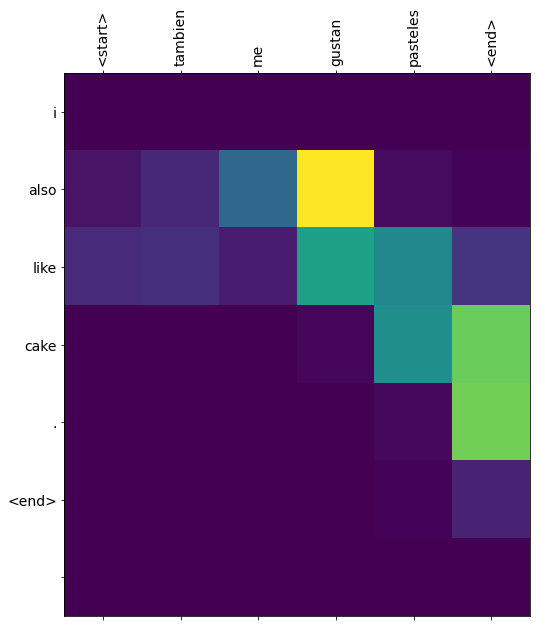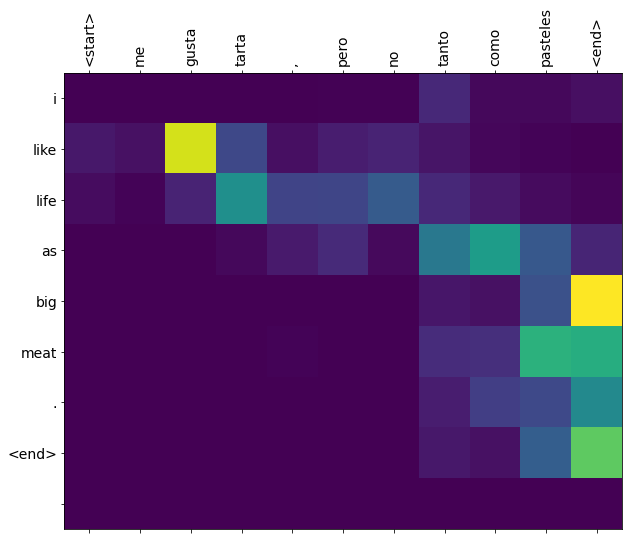A. Using NLP to build a sarcasm classifier
1. Pick two or three news sources and select a few news titles from their feed (about 5 is likely enough). For example you could select CNN, Fox News, MSNBC, NPR, PBS, Al Jazeera, RT (Russia Today), Deutsche Welle, Facebook, BBC, France24, CCTV, NHK World or another source you wish you analyze. Run your sarcasm model to predict whether the titles are interpreted as sarcastic or not. Analyze the results and comment on the different news sources you have selected.
- I decided to try out news titles from a range of political viewpoints, so I selected five titles each from MSNBC (more liberal), Fox News (more conservative), and PBS (more independent). I then decided to try out another set of five titles from a satirical news source, The Onion, to see how accurate the model would be on titles I knew were meant to be sarcastic. The model then predicted a floating point value between 0 and 1, with a number closer to 1 indicating that the article headline is sarcastic and a number closer to 0 indicating the article headline is factual. The tables below display the results, as well as the corresponding headlines. I thought it was really interesting to see that the model interpreted PBS as the most sarcastic news source, especially since The Onion is meant to be a sarcastic news source and PBS seems to be the most neutral of the traid news sources I selected. I also thought it was really interesting that the model interpreted The Onion to be just as sarcastic as MSNBC and Fox News. In fact, the model didn’t even think that articles from The Onion were really sarcastic at all, as its average prediction score was less than 0.5, at approximately 0.2.
| News Source | Article 1 Prediction | Article 2 Prediction | Article 3 Prediction | Article 4 Prediction | Article 5 Prediction | Average Prediction |
|---|---|---|---|---|---|---|
| MSNBC | 7.33e-02 | 1.80e-08 | 8.17e-09 | 1.17e-08 | 9.99e-01 | ~ 0.2 |
| Fox News | 8.18e-03 | 3.49e-05 | 9.48e-01 | 2.03e-04 | 2.01e-06 | ~ 0.2 |
| PBS | 1.12e-07 | 9.91e-05 | 8.34e-08 | 9.99e-01 | 9.95e-01 | ~ 0.4 |
| The Onion | 5.60e-03 | 6.97e-07 | 4.89e-08 | 9.98e-01 | 1.48e-04 | ~ 0.2 |
| News Source | Article 1 Headline | Article 2 Headline | Article 3 Headline | Article 4 Headline | Article 5 Headline |
|---|---|---|---|---|---|
| MSNBC | ‘Faithless commander-in-chief’: Steve Schmidt blasts Trump for his stance on Russia | How Trump is slowing down the post office in the year of the mail-in ballot | Rick Stengel calls the removal of U.S. troops from Germany ‘Vladimir Putin’s dream’ | Why did Trump push for $2 billion for the FBI building in his coronavirus relief package? | Ron Johnson, head of Sen. oversight committee, benefited financially from policies he backed, claims new group |
| Fox News | Homeland Security chief slaps down ‘absolutely backward’ claim federal agents provoking violence | Democrat accuses Republican of Big Tech ‘conspiracy,’ he snaps back | Why Carlson says he’s concerned over ‘most consequential VP pick’ in history | Bill Gates sides with President Trump on reopening schools amid pandemic | Colorado restaurant owners who defied lockdown close their doors, cite ‘disheartening’ restrictions |
| PBS | McConnell: Some Republicans think ‘we have already done enough’ pandemic aid | House lawmakers grill tech CEOs over possible anti-competitive practices | As a virus ravages the world, antibiotic makers are in disarray | Russia bounty reports, U.S. troop movements put Trump-Putin relationship in spotlight | Is U.S. regulatory framework capable of reining in big tech companies? |
| The Onion | Kanye Forced To Sleep In Separate Hyperbaric Chamber After Kim Kicks Him Out Of Geodesic Dome | Pros And Cons Of Banning TikTok | Happiness In Selfie Almost Looks Real | Scientists Locate Impact Crater From Asteroid That Destroyed Roman Empire | L.A. Designates Open-Air Dining Areas Along 101 Freeway Media |
B. Text generation with an RNN
1. Use the generate_text() command at the end of the exercise to produce synthetic output from your RNN model. Run it a second time and review the output. How has your RNN model been able to “learn” and “remember” the shakespeare text in order to reproduce a similar output?
-
Aside from using “Romeo: “ as the output starter in the TensorFlow link exercise, I also used “Juliet: “ and “Benvolio: “ to continue with the Romeo & Juliet theme. The RNN appeared to learn and remember the type of vocabulary that appears in Shakespeare’s writings quite well, but the sentences didn’t really make sense. Although a few words appeared to be nonsensical, I wouldn’t discredit the model for this reason because Shakespeare often used self-invented words within his plays. I have attached the corresponding generated scripts below. An RNN is able to do this by “remembering” the characters it has previously seen in the input text and then predicting what it expects to see next. First, the input text is divided into sequences, and the target includes a sequence of this same size, but shifted one character over from the respective input sequence. The first layer in the RNN is an embedding input layer, which will match the words up to dense embedding vectors. The next layer is called a “GRU”, which is a type of RNN. In this particular model, there were 1,024 units in the RNN GRU layer. The final layer is a Dense layer, which provides the prediction output.
-
Juliet:
JULIET: 'tis wonterful wom Of transforth, my lord are green-lands! Come, you must not on us. Show, my lord; That he aids me his constant to thy mastal slanders. Could you have had none on the man gof as tod Warwick something straight, I'll go some pursuit a scorn, till we her his money o' the hargement, to stay myself? JULIET: O God--hollow, yout more friends,'Banciend of her friar, a city fair, And lead no man bulied at against the soke of any liberty. Why, what is resoly at all? LAUD afteryou foutt; and, sir, are in devil: Whus he atress your exclaiment makes thee means, As will the king's right on 'True me past. LEONTES: God-den thou tread me, madam; you mar; For thou goodfrignstant Isal: My father he come to thee in her too; When you his remiesand are mine. GLOUCESTER: 'Tway to accusay my gates barnand esteet, she believe thy words: and let me may command us well in those untoo and unfest; Begid thee not so sorry and proser them; By her confessed with the dispass to execute. What whith -
Benvolio:
BENVOLIO: leave your gates, Prepost: my wisdom for him, friar, Or, as the glasses with thee my incomfincency Was in theirs; forswers to seek the wolf As dined for med at his neck. Ah, without tooth. Do, greater hence, and know my seas illd I no more. His trainors! PROSPERO: Speal as I have no struck, bastarding. These only sen about him? and to thy wifes by saint, And a joir complebers can doth rough to hanged well unsatiest joys, And dress your daughter, friar Launt careful business should concease me, as I see the office. PERDITA: A strange thousand Tybresictry, and not am I tremble with sil Ty attendany all aloom; friends upon him here he not open again, thou art ancient'd Take his child from thou canst down it were, And make her disposition. Will you not then, my ground back; And with all right And pass you tell. Pray violent do not use to fain, Fear not till your sod will be gone. GREMIO: And in good son Prove, it granterform. MENENIUS: Very truth,--O foul time-- With these your heads,
C. Neural machine translation with attention
1. Use the translate() command at the end of the exercise to translate three sentences from Spanish to English. How did your translations turn out?
- Coincidentally, like the example from the TensorFlow link, the first two sentences I selected were correctly translated and the last sentence was incorrect. The first sentence I used was “Me gustan galletas,” which the program correctly translated to “I like cookies.” On a similar note related to sweets, I then used “También me gustan pasteles,” which was also correctly translated to “I also like cake.” Lastly, I used “Me gusta tarta, pero no tanto como pasteles.” This should have translated to something similar to “I like pie, but not as much as cake.” However, it instead was very incorrectly translated to “I like life as big meat.” It was also quite interesting to see the attention plot created for this final sentecne, as it was longer than the other two or the example sentences from the TensorFlow article, so there was more activity that could be seen. Considering there were more words in this sentence, it was reasonable to suspect that the model may accidentally mistranslate the sentence. Consequently, it would be important to create a more robust model (potentially by adding additional layers to the neural network) before relying on it for translations in the real world.


